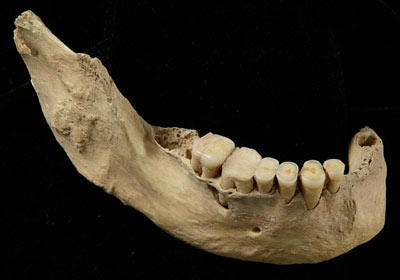| Tools: Save | Print | E-mail | Most Read |
| Chinese Paleontologists Unveil Key Skeletal Find |
| Adjust font size: |
The discovery of an early modern human skeleton in China dated as about 40,000 years old has helped shed more light on the history of human development.
The new finding, by researchers at the Institute of Vertebrate Palaeontology and Palaeoanthropology affiliated to the Chinese Academy of Sciences and Washington University, is published this week online in the Proceedings of the National Academy of Sciences. The researchers examined a skeleton recovered in 2003 from the Tianyuan Cave, Zhoukoudian, near Beijing. The skeleton dates back 42,000 to 38,500 years, making it the oldest modern human skeleton from eastern Eurasia, and one of the oldest modern humans from the region, said the researchers. Most of its features match those of modern humans, while a minority of features is more like late archaic humans. Based on this finding, the researchers have added their voices to those who deny the African dispersal theory, a belief that human life began from a simple spread of modern humans eastward from Africa. Slightly younger skeletons have also been found in eastern Eurasia with similar mixes of features. The researchers said the Tianyuan skeleton also provides data on many aspects of its biology and will be useful for reconstructing the transition from archaic to modern humans in eastern Eurasia. (China Daily April 3, 2007) |
| Tools: Save | Print | E-mail | Most Read |
 |
| Related Stories |
